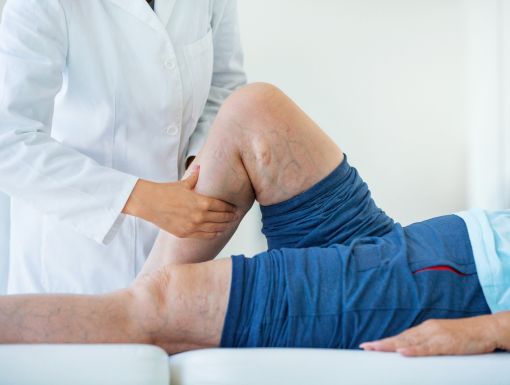
Best Exercises To Try If You Suffer From Peripheral Artery Disease
Peripheral artery disease, commonly referred to as PAD, is the narrowing or blockage of the vessels that carry blood to the legs and feet. It is primarily caused by the buildup of fatty plaque in the arteries, called atherosclerosis. PAD can happen in any blood vessel, but it is more common in the legs.
The decreased blood flow can lead to common symptoms such as pain in the lower legs/calf during walking, which is relieved with rest, called intermittent claudication. This can progress to pain in the legs at rest and wounds that heal slowly in the lower legs and feet. If left untreated, peripheral artery disease may result in amputation. Peripheral artery disease greatly increases the risk of:
- Heart attack
- Stroke
- Premature death
It is estimated that over 200 million people worldwide and 6.5 million Americans over the age of 40 have peripheral artery disease. Risk factors for peripheral artery disease include:
- Smoking
- High blood pressure
- Diabetes
- High cholesterol
- Age above 40 years
- Family members with peripheral artery disease
Treatment of peripheral artery disease involves the use of medications, including antiplatelet agents such as aspirin, cholesterol-lowering medications called statins, and stopping smoking.
How can you manage PAD pain with exercise therapy?
Several studies have shown that supervised exercise therapy is effective at reducing leg symptoms in patients with intermittent claudication from peripheral artery disease. This allows patients to walk longer distances without pain, which improves functional status and quality of life. The sessions consist of:
- Graded exercise - 30-60 minutes of graded exercise on a treadmill, which is supervised by a physician or other trained, qualified personnel, and are conducted in a hospital outpatient setting or a physician’s office.
- Walking on a treadmill - after a five-minute warm-up period, participants are asked to walk on the treadmill until they have mild to moderate pain.
- Stop and rest – patients are asked to stop, sit down and rest until the pain has completed resolved.
- Next, patients resume walking - the goal is to reach an exercise session of 50 minutes in duration (including rest periods), which allows for five-minute warm-up and cool-down periods to bring the total session duration to 60 minutes.
What are exercises for PAD you can do at home?
For people who do not have access to supervised exercise therapy, studies have shown that home-based programs can improve walking endurance and physical activity in patients with PAD. The steps for home-based exercise for PAD are:
- Patients should engage in walking exercise at least five days per week, working up to 50 minutes per exercise session.
- Patients are advised to walk to severe leg discomfort (a severity of 4 or 5 on a scale of 0-5) and rest until the discomfort subsides enough to resume walking.
What are alternative exercise strategies for patients with PAD?
Whereas treadmill walking is the most recommended form of exercise therapy for patients with claudication, the following exercises are reasonable alternatives for improving leg symptoms in patients with PAD:
| Ten repetitions of leg cycling, done for two minutes each with two minutes of rest in between. | ||
| Twenty minutes of arm cranking or arm cycling for 20 minutes of exercise per session, two times per week, for 12 to 14 weeks. Arm cranks, also known as arm or upper-body ergometers, enable you to pedal with your arms on an exercise machine that resembles an inverted stationary cycle. | ||
| Three sets of eight repetitions of exercises for different upper and lower body muscle groups. Build up slowly to the maximum number of repetitions. |
The goal of exercise therapy for PAD is to help you get back to your routine, so you can walk or go to the grocery store without the physical pain caused by PAD.
Don’t let your PAD symptoms keep you from the things you love to do. Talk with your doctor about these exercises and other treatments for PAD and get moving!
Ochsner vascular and endovascular surgeons are nationally recognized. Make an appointment with our team today.


